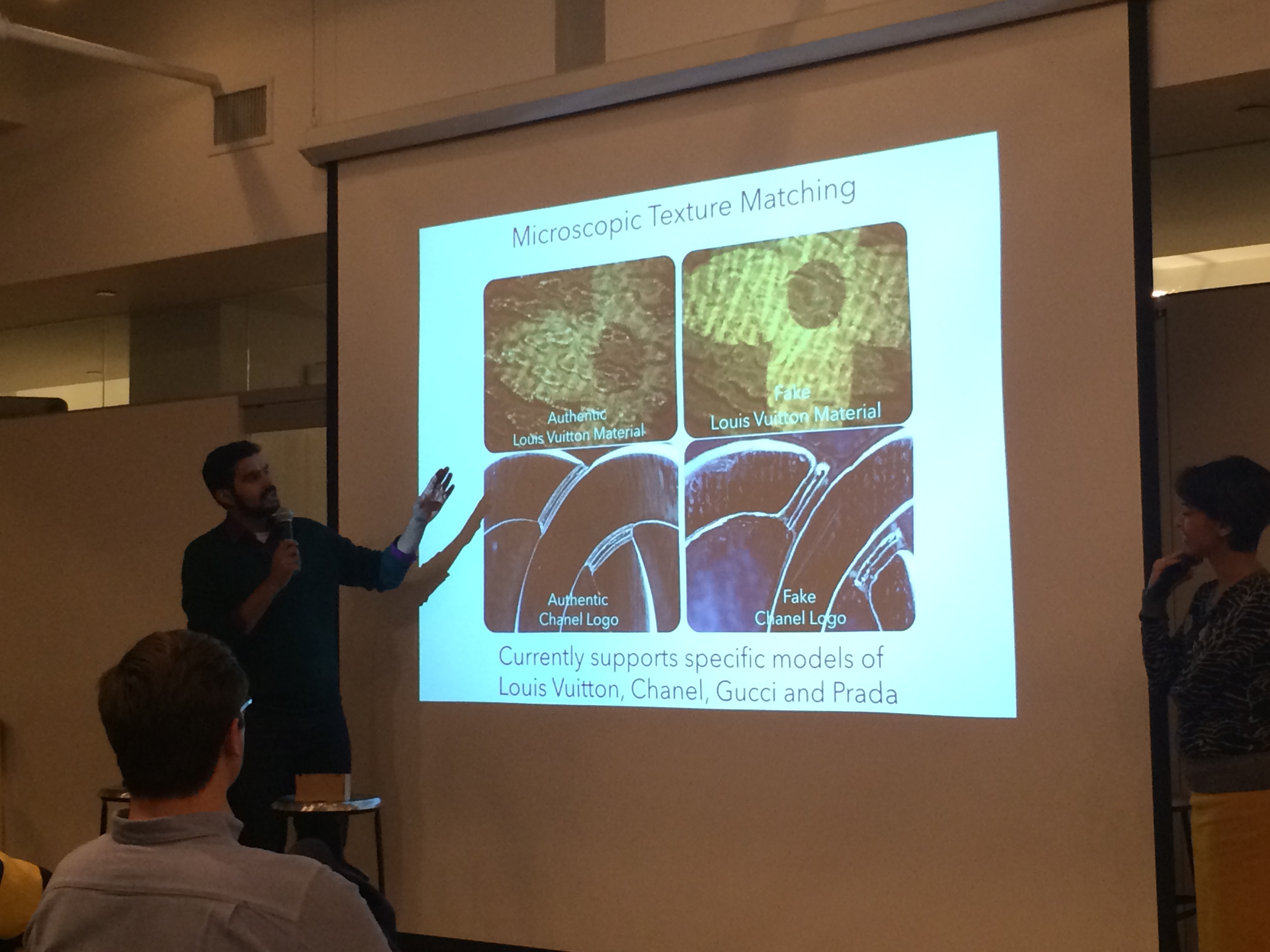Advancements in technology are not just making better products for us to buy: they’re also helping to reduce fraud and authenticate transactions. Decoded Fashion’s global event series on February 10th highlighted three progressive startups who are pushing the limits of technology to make sure that consumers are getting the real deal. Especially important when purchasing luxury goods, see how these companies are protecting the user through the entire transaction cycle.
Real or Fake? A $2.72 Billion Question
People often wonder if a handbag is legit or just a really good knock off? There may be a good chance it’s a fake, considering that the counterfeit luxury goods industry is worth an astounding $2.72 billion, according to Entrupy’s founder VidyuthSrinivasan. He explained how they’ve created a piece of hardware (still in beta) that can authenticate the fingerprint of any texturized surface against their database of products to determine whether an item is a fraud or not.
The problem in the current market is that it’s so easy to sell counterfeit product. “The FBI may shut down 40,000 sites selling knock-offs, but a month later another 80,000 will popup. Using our hardware, a resale boutique buyer could capture a magnified photo of any texture, which is then verified via a smartphone app in 10 seconds, to see if it’s authentic.”
Currently supporting specific designs from Louis Vuitton, Chanel, Gucci and Prada, Entrupy’s database of authentic fingerprints is growing to include every part of the bag, such as zippers, straps, lining and dust bags.
40% of Tiffany Jewelry on Ebay Is Fake
Whether online or in New York City’s diamond district, it can be nearly impossible for most buyers to know if they’re getting a real Cartier or a pretty good replica. Tirath Kamdar, CEO and co-founder of TrueFacet, shared some frightening statistics.
“At any given time, 40% of Tiffany jewelry on Ebay is fake, but the number may often be much higher. In a test, Tiffany’s purchased 178 items, and 74% were fake.”
TrueFacet’s photo recognition technology is changing the way consumers shop for and sell their high-end jewelry to ensure authenticity. Kamdar explains the process, “We’ve been building a database of fakes – we know what is fake and what isn’t. We’ve built photo recognition technology augmented by our team of expert appraisers who can determine (in under two minutes) whether an item is real or not.”
The problem doesn’t just affect retail shoppers, but resellers as well, and can become even riskier when working overseas. “I recently spoke to someone who was making a huge overseas purchase, based on trust. When this person received the order, every item was counterfeit,” he shared. “More than relationships, you have to ask for proof and know the history of who you’re dealing with. We’re building the technology to do this for you.”
Fake Credit Card Numbers for $16 Each
Online fraudsters have a very high success rate, and it’s very easy to get into this line of work. After purchasing 16 credit card numbers for just $16 each, Trustev CEO Pat Phelan found that they had an 80% success rate. His team’s technology has created a new approach to combat this growing industry and reduce the amount of manual review that companies endure. He explained, “You do $100,000 in online sales a day, and $2,000 of that is fraud, so how much time do you put into manual review? A top brand will have 3-4% of orders that need manual review which, in an average size large company, is a 50-100 person team. Paypal has a team of 3,000.”
This is an extremely time consuming process, but one brands are forced to endure, because they’re not getting protection from online processing or banks. “You get an order and Stripe and Wells Fargo tell you to proceed all based on zip code match and that the card has credit. So then you look at it, and the codes in the credit card numbers show the card’s country of origin, but that doesn’t match the IP address – so there’s a flag. You put your customer service reps on it, pretending to be fraud protection people, and they see that the name, email and delivery address don’t all match up.”
Until now, fraudulent order review has been a manual, piecemeal process. Trustev has solved this problem in less than 2.4 seconds per order. Each transaction is reviewed pre-payment, and thousands of data points are scanned. The current solution – “we had one bad order from Russia, so let’s block all orders from Russia” – doesn’t work, Phelan says. New technology can scan and evaluate unrelated data points from browsing behavior and email composition to Facebook friends and mobile phone carriers, to decide if an order is real or fake.
Fraud at the point of sale is a serious problem, be it stolen credit cards or the plain and simple fact that the merchandise is fake. These three companies are members of the growing anti-fraud movement that extends well beyond fashion. In a perfect world, all handbags will be authentic and everyone will use his or her own credit card. Until such a time arrives, watch out for these pioneers and others who are trying to increase the trust between seller, buyer, and manufacturer.




